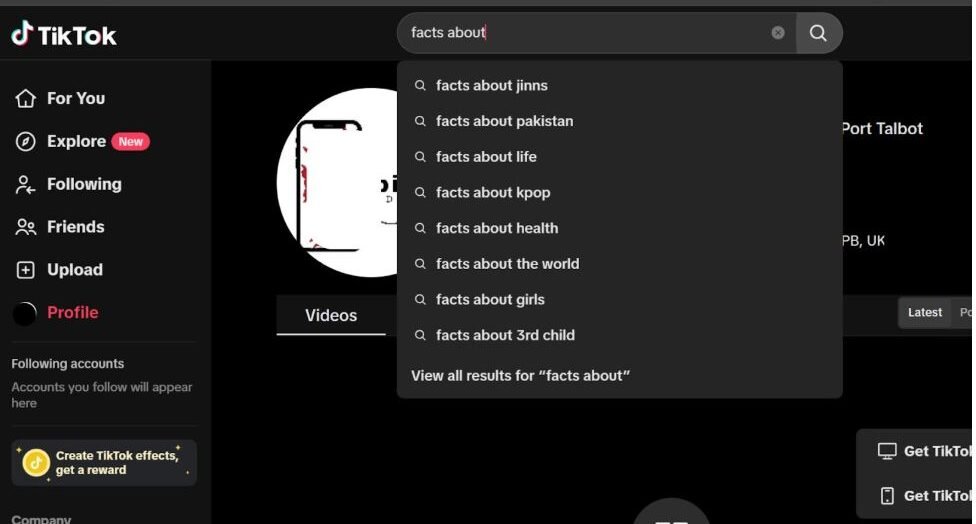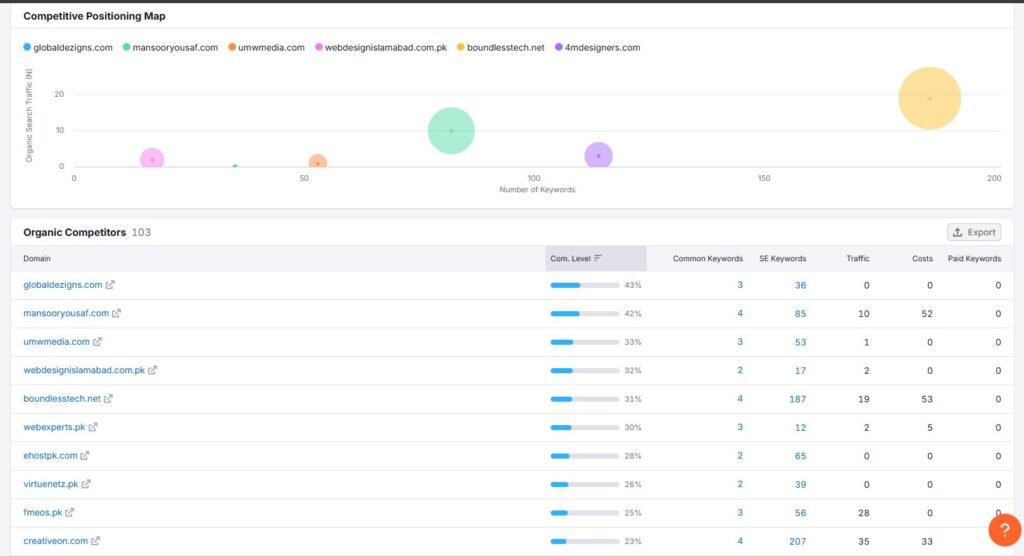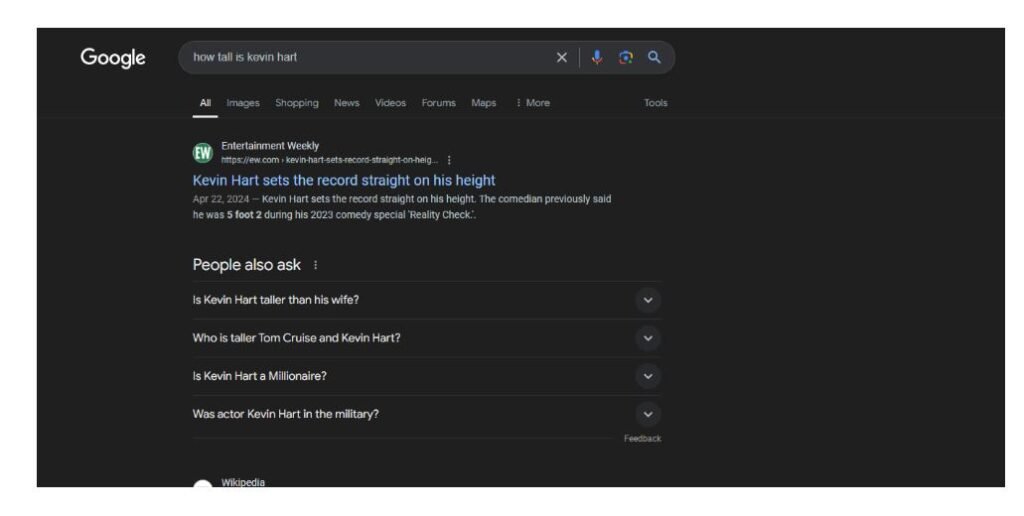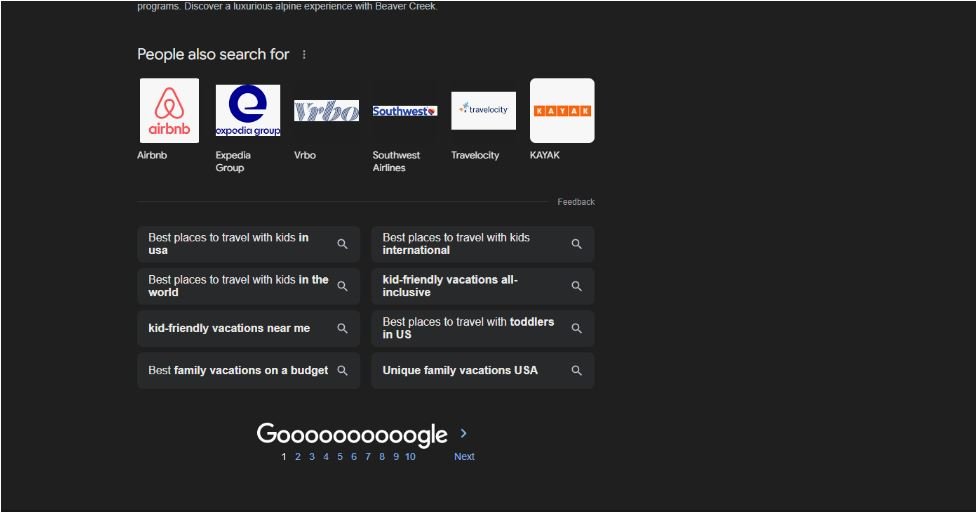At SpeedX Marketing, we are a leading provider of innovative IT solutions tailored to meet your specific business needs. With years of expertise and a team of skilled professionals, we offer cutting-edge technology solutions that drive growth and efficiency.

In the dynamic world of SEO, keeping ahead means adapting to new strategies and trends. One major shift we’re seeing is the growing focus on optimizing for low-competition keywords. The days of solely targeting high-volume, high-competition keywords are behind us. With search algorithms becoming more advanced and user intent playing a pivotal role, the true advantage lies in identifying low-competition keywords that can bring in targeted traffic with less effort.
Imagine you’re a small business owner launching a new line of eco-friendly skincare products. Competing with industry giants for broad keywords like “natural skincare” might seem like an uphill battle. But by focusing on low-competition phrases like “organic aloe vera face cream” or “sustainable bamboo skincare packaging,” you can carve out your own niche, attract a more specific audience, and see faster results. This approach not only saves time and resources but also aligns perfectly with the latest SEO trends that prioritize relevance, user experience, and long-tail keyword strategies.
As SEO continues to shift towards more personalized and intent-driven search experiences, mastering the art of finding and leveraging low-competition keywords is key to unlocking sustainable success in the digital landscape.
In this article, we’ll explore what low-competition keywords are, why they matter, and how you can find and use them to boost your website’s visibility. Whether you’re a seasoned SEO professional or just starting, mastering these keywords could be your key to staying ahead in the rapidly changing SEO landscape.Get ready to transform your SEO game by working smarter, not harder!
A low-competition keyword is a search term or phrase that has relatively few other websites or pages targeting it. These keywords are often easier to rank for because there is less competition from other content. Low-competition keywords are typically characterized by:
Low-competition keywords are important because they offer a strategic advantage for achieving higher rankings and attracting targeted traffic with less effort compared to high-competition keywords. By focusing on these keywords, you can achieve better visibility and attract a more engaged audience. Here’s a brief view:
Embracing low-competition keywords not only helps you carve out a niche but also aligns with the latest SEO trends that favor relevance and specificity over generic popularity.
Here’s an in-depth look at how to find those elusive low-competition keywords using cutting-edge techniques and real-world examples.
Reddit is a treasure trove of real conversations and community insights, making it an excellent resource for finding long tail keywords.

Reddit Conversations about Technical SEO. You can get ideas about many low competition long tail keywords from here.
To leverage Reddit for keyword research, follow these steps:
By systematically exploring Reddit and utilizing additional tools, you can effectively identify and incorporate long tail keywords that cater to your target audience’s specific needs and interests.
TikTok’s “Others Searched For” feature is an emerging tool for finding low-competition keywords.This feature reveals trends and interests through its “Others Searched For” section, which provides insights into what users are exploring related to your niche. It shows what other users searched for in addition to the original query, giving you insights into trending but not yet saturated keywords. For instance, if you’re in the fitness niche and see that “home workouts for small spaces” is gaining traction on TikTok, you can target this keyword early to capture a segment of the market that’s not yet oversaturated.
TikTok is increasingly becoming a search engine in its own right, particularly among younger audiences. This shift means that the keywords surfaced by TikTok’s “Others Searched For” feature can provide a glimpse into emerging trends before they hit mainstream search engines like Google. The real-time nature of TikTok’s search trends allows content creators to quickly adapt their SEO strategies to capitalize on new low-competition keywords.
A beauty influencer might use TikTok’s “Others Searched For” to discover that users are searching for “DIY skincare with turmeric.” This keyword might not yet be heavily targeted by websites, allowing the influencer to create content around this topic and rank quickly on Google, as well as gain visibility on TikTok itself.

TikTok’s rapid growth and unique algorithm make it a goldmine for finding low-competition keywords and niche trends!
Facebook’s recommendation requests and questions offer a goldmine of low-competition keyword opportunities. In Facebook groups, community pages, and forums, people often ask for recommendations or advice, using natural language and specific terms. By monitoring these conversations, you can identify recurring phrases or questions that aren’t highly competitive in search engines but have clear user intent.

Get keyword ideas from Facebook groups
Users often seek advice or recommendations that reveal gaps in existing content. By analyzing these queries, you can find niche topics with less competition. For instance, if people are frequently asking for “best budget travel gear for solo female travelers,” creating content around this specific query can help you rank higher for a keyword with relatively low competition.
With social media platforms like Facebook becoming more integrated with search engines, monitoring recommendation requests and questions in groups can provide insight into the exact phrases and terms potential customers use. This user-generated content often reveals low-competition keywords that might not yet be heavily targeted by others.
Social listening tools are increasingly being used to monitor social media conversations in real time. These tools help identify emerging keywords or topics that have not yet become saturated in search results. A fitness trainer might notice multiple posts in a Facebook group asking for “home workouts without equipment for seniors.” This phrase could be a low-competition keyword because it addresses a specific need that might not be widely covered online. The trainer could then create content around this keyword to attract senior clients.
Finding low competition long tail keywords can significantly enhance your SEO strategy by targeting specific, less competitive search queries. Quora, a popular question-and-answer platform, is an excellent resource for uncovering these valuable keywords.

Here’s a detailed guide on how to leverage Quora to find them:
By following these steps, you can effectively use Quora to discover low competition long tail keywords that will enhance your SEO efforts and attract more targeted traffic to your site.
Analyzing competitors’ websites can uncover valuable low-competition keywords. Analyzing competitors’ websites is increasingly essential as search engines evolve and competition intensifies. This involves looking at their content strategies, keyword usage, and ranking tactics.

Let’s consider If your competitor’s blog frequently covers “best smart home devices” but neglects “affordable smart home devices for small apartments,” you can create content around the latter. This niche topic might face less competition and attract a specific audience segment. Likewise, If competitors in the tech industry focus heavily on “smart home devices,” you might discover less competitive keywords such as “affordable smart home automation for apartments” that have potential for ranking.
Pinterest is not only a visual discovery tool but also a powerful resource for generating long tail keyword ideas. The platform’s search functionality and rich visual content can help you uncover niche topics and specific queries that potential readers or customers are searching for.

Here’s a detailed guide on how to leverage Pinterest for finding long tail keywords and uncovering low competition opportunities.
By following these steps, you can effectively use Pinterest to generate long tail keyword ideas that are specific, relevant, and often have lower competition. This approach not only helps in optimizing your content for search engines but also ensures that you’re targeting the right audience with precise and valuable keywords.
Google Autocomplete helps identify potential low-competition keywords by suggesting popular searches related to your initial query. It provides real-time data on popular search queries related to your target keywords. Typing in a base keyword and observing the suggestions can help you find low-competition keywords that people are actively searching for. For example, entering “organic skincare” might reveal autocomplete suggestions like “organic skincare for sensitive skin” or “organic skincare routines,” which could have lower competition.

Here’s how to leverage it:
If you’re a fitness coach and type “home workout,” Google Autocomplete might suggest “home workout for beginners” or “home workout without equipment.” These long-tail variations can be less competitive and more targeted.
Google’s “People Also Ask” (PAA) feature provides additional keyword ideas by showing related questions users are asking. These questions are often variations or long-tail keywords that can be less competitive.This feature helps you discover variations and related questions that might have lower competition. For example, searching for “digital marketing tips” might reveal questions like “how to create a digital marketing plan” that offer potential low-competition keywords.

Here’s how to Use PAA for finding keywords:
Enter a Broad Keyword: Start with a general keyword related to your niche and review the questions that appear in the PAA box. E.g. Searching for “digital marketing” might bring up questions like “What is digital marketing?” or “How does digital marketing work?” which can lead you to more specific, less competitive keywords.
Expand on PAA Questions: Use the questions and their variations to explore long-tail keywords or niche topics. E.g..If PAA shows “What are the best SEO tools for small businesses?” you can explore keywords like “affordable SEO tools for startups” or “best SEO tools for local businesses.”
Combine PAA Insights with Keyword Tools: Cross-reference PAA keywords with keyword research tools to gauge their competition level.E.g. A PAA question like “How to optimize a blog post for SEO?” can lead to keywords like “SEO blog post optimization tips,” which can be further analyzed for competition.
Google’s “Related Searches” at the bottom of search results pages can be a treasure trove of low-competition keyword ideas. Related searches are becoming more contextually relevant due to improvements in Google’s understanding of search intent. These suggestions show related topics that people are searching for. Increased focus on user intent and behavior means these suggestions are better aligned with what users are actually looking for.For instance, searching for “organic gardening” could yield related searches like “organic gardening tips for beginners,” which might have lower competition compared to broader terms.

Google’s “Related Searches” section at the bottom of the SERP provides a list of similar queries that users frequently search for. These terms can reveal low-competition keywords that are relevant to your niche.
How it works:
If you search for “best home workout routines” on Google, the “Related Searches” might include “best home workout routines for beginners” or “home workout routines without equipment,” which could be less competitive but highly targeted. Searching for “vegan meal plans” might show related searches like “easy vegan meal prep ideas” or “quick vegan recipes for beginners,” which can be less competitive but still relevant.
Using Google’s “allintitle” or “allinurl” search operators helps you identify how many pages are targeting a specific keyword. Searching for “allintitle
Using Google’s advanced search operators like allintitle: or allinurl: can help identify keywords with less content competition.

Searching allintitle:”best compact workout equipment” might return fewer results compared to a broad term like allintitle:”workout equipment”. Similarly, searching allinurl:”homemade dog treats recipes” might show fewer pages than allinurl:”dog treats recipes”.
SEO tools” can reveal how many pages have that keyword in the title, helping you gauge competition levels. Keywords with fewer results indicate lower competition.
Keywords Everywhere provides data on keyword competition and search volume. By using this tool, you can identify keywords with lower competition and higher potential. For example, if you’re targeting “home workout routines,” Keywords Everywhere might reveal related keywords like “beginner home workout plans” with lower competition and decent search volume.

Keywords Everywhere is a browser extension that provides keyword metrics directly in the search engine results. It shows search volume, cost-per-click (CPC), and competition data for keywords.
For instance, if you search “digital marketing tips” and Keywords Everywhere shows a lower competition score for “digital marketing tips for small businesses,” you can target that specific term. If you’re optimizing a page for “freelance graphic design tips,” and Keywords Everywhere shows lower competition for “freelance graphic design tips for beginners,” this could be a more strategic choice.
Google Ads Keyword Planner remains a staple for keyword research, offering insights into search volume, competition, and keyword suggestions. By analyzing this data, you can find keywords with lower competition.

Google Ads Keyword Planner is a powerful tool for identifying low-competition keywords. Here’s how to use it effectively:
For instance, if you find that “eco-friendly cleaning products” has high competition, Keyword Planner might suggest less competitive variations like “affordable eco-friendly cleaning solutions.”
Incorporating these strategies into your SEO approach can help you find and capitalize on low-competition keywords, enhancing your visibility and driving targeted traffic. As SEO continues to evolve, staying updated with the latest trends and tools will keep you ahead of the competition and optimize your content effectively.
Understanding search intent involves analyzing the purpose behind a user’s search query. This can be informational (seeking knowledge), navigational (looking for a specific site), transactional (wanting to make a purchase), or commercial (researching a product). By grasping the search intent, you can create content that meets the user’s needs, making it more likely to rank well for low-competition keywords. Search engines are increasingly sophisticated in interpreting search intent. Google’s algorithms now use advanced AI to understand the context and relevance of queries better. This trend emphasizes the need for creating content that genuinely answers user questions or fulfills their needs.
Consider that If you’re a local bakery, targeting a keyword like “best gluten-free cookies in [your city]” would involve understanding that users are likely looking for specific recommendations or reviews. Create content that provides detailed reviews of your gluten-free cookies, customer testimonials, and information about where to buy.
Grouping similar keywords—also known as keyword clustering—helps streamline content creation and optimize pages for multiple related queries. This approach allows you to address several related search intents within a single piece of content, enhancing its relevance and authority. The focus on topic clusters and pillar content is growing. This strategy involves creating comprehensive pillar pages on broad topics and supporting them with cluster content on related subtopics. It improves content organization and helps search engines understand the context better.
For a fitness website, instead of targeting individual keywords like “home workout tips,” “beginner exercise routines,” and “at-home fitness equipment,” one might create a comprehensive guide titled “The Ultimate Guide to Home Fitness” that covers all these aspects. This pillar page can be linked to various blog posts addressing specific queries.
High-quality content is informative, engaging, well-researched, and optimized for SEO. It provides real value to the reader, addressing their needs and questions comprehensively. Content quality is crucial for ranking well, even for low-competition keywords, as search engines prioritize user satisfaction. Content quality is now heavily influenced by E-A-T (Expertise, Authoritativeness, Trustworthiness) principles. Search engines are focusing more on the credibility of content creators and the depth of information provided. This trend underlines the importance of well-researched and expert-backed content.
If you’re a tech blogger focusing on “affordable budget smartphones 2024,” your content should include detailed reviews, comparisons, user testimonials, and expert opinions. Adding multimedia elements like videos and infographics can also enhance the quality and engagement of your content.
Finding low-competition keywords is a strategic process that requires patience, creativity, and a blend of tools and techniques. By focusing on long-tail keywords, which are often less competitive and more targeted, you can tap into niche markets with higher chances of ranking. Leveraging tools like Google Keyword Planner, Ahrefs, SEMrush, and AnswerThePublic allows you to gather keyword ideas based on search volume and competition metrics. Exploring user-generated platforms like Quora and Reddit also provides valuable insights into what real users are searching for and discussing, offering a wealth of content inspiration. Competitor analysis further helps to discover untapped keyword opportunities, while local SEO and industry-specific keywords can help you rank higher in niche areas. Ultimately, the key to finding low-competition keywords lies in understanding your audience’s search intent and consistently creating content that addresses their needs, giving you an edge in search rankings.
